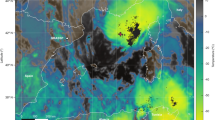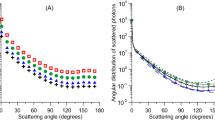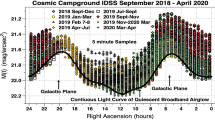Abstract
I HAVE succeeded in exciting the auroral green line under conditions which indicate that it must have been produced in a manner similar to that in the light of the night sky. In order to describe my experiments properly, it is necessary first to recall the excitation of the green line in active nitrogen1. In that experiment it was possible for the first time to produce the green line under conditions which give some clue to its production in both the aurora and the night sky, since there are metastable nitrogen molecules in active nitrogen, and one would certainly expect metastable nitrogen to play an important rôle in the upper atmosphere. My recent discovery of a new modification of active nitrogen2, the afterglow of which was a very faithful reproduction of that part of the auroral spectrum which is due to nitrogen, added an argument for the hypothesis that the green line is excited by metastable nitrogen molecules.
This is a preview of subscription content, access via your institution
Access options
Subscribe to this journal
Receive 51 print issues and online access
$199.00 per year
only $3.90 per issue
Buy this article
- Purchase on SpringerLink
- Instant access to full article PDF
Prices may be subject to local taxes which are calculated during checkout
Similar content being viewed by others
References
Kaplan, Phys. Rev., 33, 154; 1929.
Kaplan, NATURE, 133, 331; 1934.
Hamada, NATURE, 134, 851; 1934.
Author information
Authors and Affiliations
Rights and permissions
About this article
Cite this article
KAPLAN, J. Light of the Night Sky. Nature 135, 229 (1935). https://doi.org/10.1038/135229a0
Issue date:
DOI: https://doi.org/10.1038/135229a0
This article is cited by
-
A New Nitrogen Afterglow Spectrum
Nature (1935)



